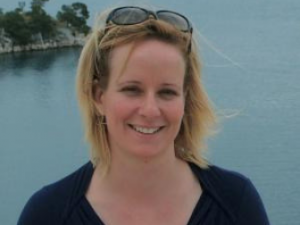Humanity’s impact on the Earth is so profound that scientists the world over have deemed the current geologic era the Anthropocene. But when did it begin?
“There has been a longstanding debate between archeologists and earth system scientists about when the beginnings of the Anthropocene should be,” said Sarah McClure, a UC Santa Barbara associate professor of anthropology.
Now, for the first time, a groundbreaking study offers an answer: roughly three millennia ago. In “Archaeological assessment reveals Earth’s early transformation through land use” in the journal Science, the authors report that their massive study involving data from more than 250 archaeologists around the world “reveals a planet largely transformed by hunter-gatherers, farmers, and pastoralists by 3000 years ago, considerably earlier than the dates in the land-use reconstructions commonly used by Earth scientists.”
The study — deemed the ArchaeoGLOBE Project — used crowdsourcing of archaeologists worldwide to examine the effects of human land use on the planet from 10,000 years before the present (yr B.P.) to 1850. The lead authors — Lucas Stephens, a Mellon ACLS Public Fellow at the Environmental Law and Policy Center, and Erle Ellis, a professor of geography and environmental systems at the University of Maryland, Baltimore County — enlisted archaeologists to complete a detailed questionnaire about land use in their particular areas of expertise.
McClure, an environmental archaeologist who studies Mediterranean prehistory, said the questions involved assessing past land use for foraging, agricultural production, settlements, cities and much more over the study period.
“They did this for each time period,” she said. “And then they looked at what the land-use patterns were in each region.”
What emerged from the data was a clear picture of a planet dramatically transformed 3,000 years ago by widespread transitions from hunting and gathering societies to extensive and intensive agriculture, pastoralism and urbanism.
McClure, who has done extensive work in Spain and Croatia, said the study’s global nature gives scientists the ability to see the greater patterns of land-use impacts. And despite some regional variances, the worldwide patterns are clear.
“So that is a really great takeaway from this,” she said. “And it is something I’ll be using in my classes moving forward when I talk about human impacts on the environment: that globally, at 3000 years ago, we can see that people have significantly altered the environment from what it was anytime previously.”
The study’s authors acknowledge there are gaps in the data. Two regions in particular, sub-Saharan Africa and Southeast Asia, are underrepresented. They attribute the “geographical inconsistencies” to such factors as “the varying conditions under which archaeologists work, the cumulative legacy and positive feedback of early research interest, and the physical accessibility (both real and perceived) of archaeological sites.”
In addition, the authors note that the questionnaires were done in English, creating what McClure called “an industrialized country bias.”
Despite the data gaps, McClure believes the study largely settles the question of when human impacts on the planet hit a tipping point. What’s more, she said it opens new conversations — and opportunities — in archaeology.
“The other thing I think is very interesting for the discipline is seeing where those gaps in information are,” she said. “And so I would imagine that the next generation of archeologists will look at this and start thinking about which areas really need to be explored more, where there are openings for major new discoveries. And some of it has to do with not only the number of people working in these areas, but the kind of archeology that’s being done.
“Environmental archeology isn’t necessarily a common area of expertise globally,” McClure continued. “I think that’s contributing to some of the lack of data in some areas, where scholars just aren’t working extensively on those kinds of questions. There are opportunities to create the kinds of datasets that allow us to reconstruct land use, such as seeds, pollen, animal bones or other environmental proxies in underrepresented regions or time periods. So if I were a graduate student right now, I’d be looking at this and thinking, ‘Oh, this is really cool because it gives me a roadmap of where my expertise could have the biggest bang for the buck for understanding the history of human impacts on the environment.’ ”
Related Link:
News Date:
Thursday, August 29, 2019
September 5, 2019 - 9:04am







